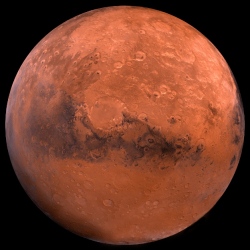
NASA has found many moons and dwarf planets with liquid water. At least ten planets, moons and dwarf planets have oceans in our solar system and there is frozen water ice on the moon, Mars and all over the asteroids and other moons. NASA spacecraft have also found signs of water in permanently shadowed craters on Mercury and our moon, which hold a record of icy impacts across the ages.
Speaking at a public panel on Tuesday in Washington D.C., NASA scientists discussed the likelihood of finding organic life in our solar system. Given the surprising number of oceans residing throughout our celestial home, they say "it’s definitely not an if, it’s a when."
Most likely, any life that NASA finds within our solar system will be simple microbes, the essential building blocks for more complicated creatures yet to come. NASA researchers say these revelations upend the earlier idea that, to find life, we need to look for planets within stars’ “habitable zones.” That theory suggests that in order for a space rock to harbor life, it needs to be at a certain "perfect" distance from a warm body (like Earth is from our sun). That way, the temperature is just right so that water can exist on the planet in liquid form.
But on Europa, liquid water exists even though the frigid moon is more than 400 million miles away from our star. It’s because the gravitational pull from Jupiter jerks the satellite around, causing enough friction and energy to heat up the liquid beneath the surface. Thus, the moon’s water can remain as a liquid when it’s so far from a light source.
"We now recognize that habitable zones are not just around stars, they can be around giant planets too," Green said. "We are finding out the solar system is really a soggy place."
